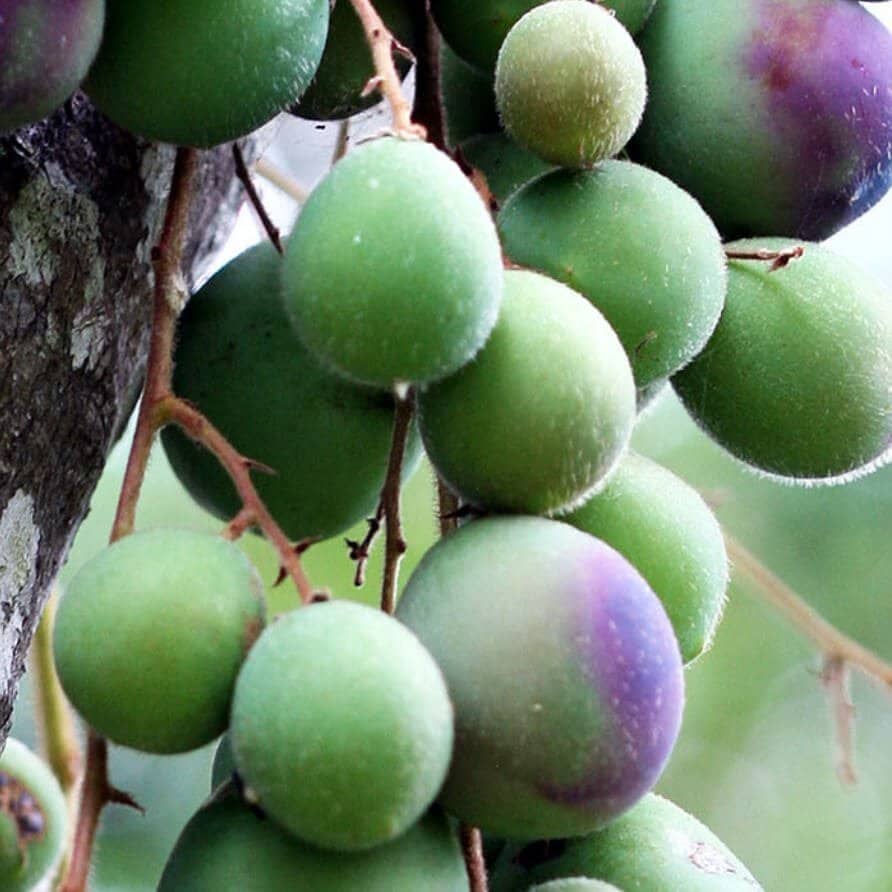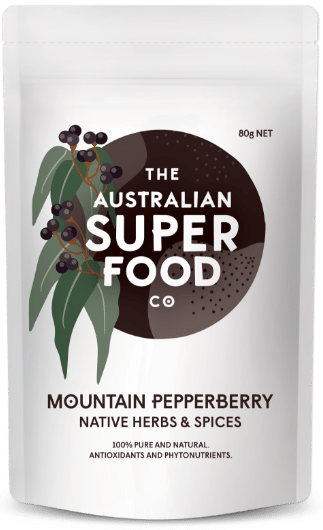Mountain pepper leaf and mountain pepperberry (also known as Tasmannia lanceolata or Tasmanian Pepperberry) grow naturally in the forest and the cool climate of southern New South Wales, Victoria and Tasmania.
This small tree grows up to five metres in height and only the female trees bear fruit. The fruit is berry-like and starts off dark red in colour and turns black on ripening.
Traditionally, mountain pepper was used for its antiseptic properties and its flavour. Both the leaves and fruit were used. Indigenous Australians suffering from sore gums and toothaches often crushed the berries with water to make a paste, which was then applied to the mouth to treat the infection. It was also added to food as a flavour enhancer.
Download The Australian Superfood Co provenance map here.
Flavour:
Mountain Pepper Berries are characterised by their polygodial content, which is responsible for their strong peppery taste. Eaten fresh, the flavour is sweet, fruity and pungent, with an intense peppery bite, that builds and lingers on the back palate. When cooked for longer periods of time, as in slow-braised dishes and sauces, the flavour becomes sweeter and less spicy.
Palate:
Initially earthy, sweet and fruity on the front palate with a intense spicy, peppery notes that build and linger on the back palate.
Aroma:
Aroma of bush scrub with fragrant fruity, menthol characteristics and delayed but intense peppery notes.
The mountain pepper plant is used both ornamentally and in food preparation, and the tree produces two products: the berry and the leaf. The berries are dark-blue to black in colour and have a sweet, aromatic peppery taste. The leaves, stems and berries produce approximately three times the antioxidants of blueberries.
Eaten fresh, the immediate taste is one of sweet, earthy notes with an intense peppery bite that lingers on the tongue and back palate, leaving an almost mineral-like aftertaste that continues to build in heat. Native mountain pepperberries are typically hotter than conventional black pepper, but more versatile, and complement both sweet and savoury dishes.
The berries can be used fresh, dried or milled as a spice. The intensity of the peppery heat decreases the longer it cooks, which slowly releases the sweetness of the berries and adds a richer flavour. Add a little just before serving to experience the fullness of the spice’s peppery punch.
Pepperberries pair well with dairy (yoghurt, most cheese varieties, cream, ice cream and gelato/sorbet), oil and vinegar-based meat marinades and salad dressings, meat-based sauces and egg-based condiments. Complements fish, seafood, chicken, pork, lamb, beef and game meat, and pairs perfectly with all vegetable varieties.
Mountain pepperberries lift the profile of alcoholic beverages such as gin, vodka, white rum, Cointreau and tequila. It adds a dark pinkish tint and refreshing, spicy twist to soda, tonic, mineral water and lemonade.
Click here for delicious Mountain Pepperberry recipes.










